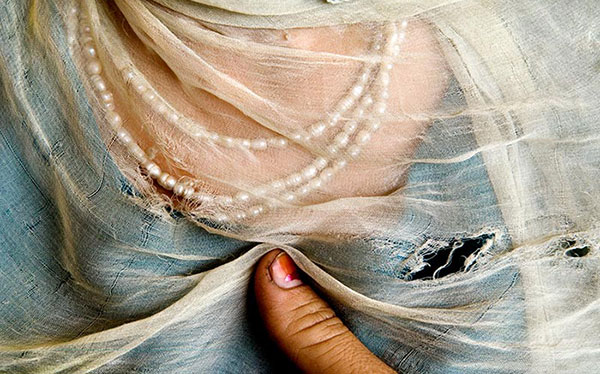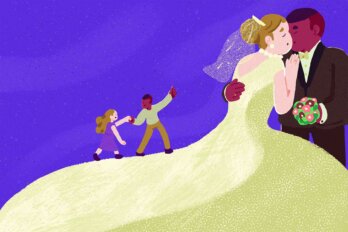The familiar brown mountains rose up beneath the wings of our Boeing 767 as we began our descent into Kabul. It was dawn, this past May, so the sun awoke just before seven. From my aisle seat, I could glimpse the city’s outskirts emerging from the shadows of the night, with small clusters of houses tucked into the edges of valleys. This had been my last view of Afghanistan five years ago, and from above it seemed like nothing had changed.
I leaned over my travelling companions to get a better look. Madeliene Tarasick and Margaret Stewart were taking pictures from the small window, captivated by the view. They have spent the past ten years raising money for the non-profit Canadian Women for Women in Afghanistan, which funds education initiatives. Now they were on their first trip here and determined to document every moment.
“Can you see? ” Tarasick asked, putting her hand on my shoulder. I nodded, then leaned back in my seat as the plane made its final approach. I took a deep breath.
In October 2008, I was on assignment for CBC, reporting on the conditions in one of the sprawling camps for internally displaced persons that had sprung up outside the city. That summer, terrible fighting had broken out in the south. Thousands of Afghans from Kandahar, Urozgan, and Helmand provinces flooded north to escape. At the Charahi Qambar camp, about a half-hour northwest of Kabul, more than 5,000 people were packed into mud huts built around open sewers. More arrived every day.
My fixer, Shokoor, and I had just finished interviewing a family and were on our way back to our vehicle when I was grabbed by a gang of thugs armed with AK-47s. I was stabbed, shoved into the back of a car, and taken to the edge of a village called Maidan Shahr. As darkness fell that Sunday night, my kidnappers threw me down a hole, an elaborate hiding place they had dug behind an abandoned house. This hole was where I would spend the next twenty-eight days; where I waited for my stab wounds to heal; where I would be violently assaulted at knifepoint. There were days when I thought I would die in this hole, my remains never to be found.
I was finally freed after Afghan intelligence authorities arrested the family of my kidnappers and set up an exchange: me for them. In effect, it was an equal swap, and my captors never received the ransom they had originally demanded. A few months after I was released, I was told the ringleader was arrested and charged with my kidnapping, among others. Later, I learned that he had been freed without ever going to trial.
By then, I had returned to Canada and to work, desperate for some normalcy, not knowing that “normal” had been forever redefined for me. I was not the only one affected in this way. Thousands of soldiers had returned home maimed and traumatized from fighting a war that began for us in 2001 with the deployment of small, secret contingents of Canadian Special Operations Forces. In 2003, it steadily grew into a full combat mission, called Operation Athena and then two years later a larger detachment moved south to maintain peace and security in Kandahar province, the very heartland of the Taliban.
In 2011, when we finally pulled out of Kandahar, nearly 40,000 Canadian Forces personnel had been deployed. The mission transformed the military into a modern fighting force, but also left us with a long roll call of dead, wounded, and battle scarred. One hundred and fifty-eight soldiers were killed, more than 2,000 were injured, and another 3,000 are estimated to have developed some form of post-traumatic stress disorder. Today more than 4,000 receive disability benefits from Veterans Affairs Canada. In dollars, the total cost is a topic of debate: up until 2011, it was pegged at $18.1 billion, and some experts say it could reach $30 billion by the time the last contingent of military and police trainers leaves in 2014.
For Afghans, this is simply a numbing continuation of the past three decades of conflict: the Soviet invasion, followed by the civil war and the rise and fall of the Taliban. And the security situation remains volatile. As of January 2013, nearly three million Afghans were living as refugees in neighbouring countries, and close to 500,000 were displaced internally. At least two generations have never known peace. Thousands of children have been separated from or abandoned by their parents, growing up in orphanages or, worse, forced into marriage at an early age.
In 2007, I visited an orphanage in Kabul full of boys, including teenagers who had forgotten they once had parents. They were fortunate in one sense. They had a roof over their heads, but the place was at capacity, and the director told me he was turning boys away every day. A year later, while being held by my kidnappers, I imagined them the way I looked at those orphans: homeless young men, influenced or brainwashed by older men who promised wealth, or at least acceptance. Poverty breeds delusion. That is why I was never angry with my captors, and why I wonder to this day if they are alive, dead, in prison, or still kidnapping people. They didn’t choose their history. They were born into it, at a time when their country was falling apart. They had no options.
Back at home after my ordeal, I refused to let my nightmares rise out of the darkness. I took on the cause of wounded soldiers as a personal journalistic mission. I visited almost every Canadian Forces base in the country, reporting on soldiers suffering from traumatic brain injuries or PTSD, or struggling over disputed claims with the Veterans Review and Appeal Board. But I couldn’t shake the guilt that nagged at me. I sought the help of a therapist, who assured me that my anxiety—a sense of something unfinished—was part of my “new normal.” Still, I was haunted by those I had left behind. I had gone to Afghanistan to expose the plight of displaced people, abused women, and orphaned children. Instead, because of my kidnapping, I had become the story.
All of this left me desperate to go back, even though some of my friends and family thought I was crazy. CBC was reluctant to send me to Afghanistan: what if I was kidnapped again? My inability to return made me feel like a hostage all over again, helpless and powerless. Unable to let it rest, I read articles and books, and set up a Google Alert on anything to do with the country I thought I would never set foot in again. I didn’t realize it then, but I was slowly becoming a stakeholder in the futures of those girls and women.
I wrote a memoir of my time in the hole, donating the royalties to a school in Bamyan province. At public speaking engagements and fundraisers, I told stories of the people I had met at the camps, stories of Afghan women who had been jailed for being raped, but these stories were now five or six years old. I needed to go back.
The only Canadians who seemed to understand this desire were veterans. Just as the battlefields of France and Belgium will forever be linked to our towns and families, to battalions and regiments, so too will the deserts and villages of Afghanistan. For some of us, Afghanistan will always be personal. Consider my good friend, the remarkable Captain Trevor Greene, who was attacked with an axe in 2006 during a meeting with community elders and suffered a devastating head injury. After years of excruciating therapy, learning how to move and talk again, he still wishes he could return to Kandahar. Instead, he has established a foundation to fund teacher training in Afghanistan—his way of completing his mission.
This is a crucial moment. In 2014, all of NATO’s forces will leave. Ready or not, the Afghan National Security Forces will take control. The situation could deteriorate: negotiations with the Taliban have started and stalled; elections are due to be held next spring; and a sense of uncertainty and apprehension has descended on Afghans, even in places that are now relatively peaceful. What will happen after the rest of the world leaves? How much—be it infrastructure, security, schools, or public institutions—will be left unfinished?
Last fall, Madeliene Tarasick asked me to deliver a talk at a fundraiser for Canadian Women for Women in Afghanistan. I told her I could not in good conscience speak at another event until I went back to Afghanistan myself. She told me she was thinking about visiting for the first time in the spring of 2013, to see what her decade of fundraising had accomplished. I immediately invited myself along.
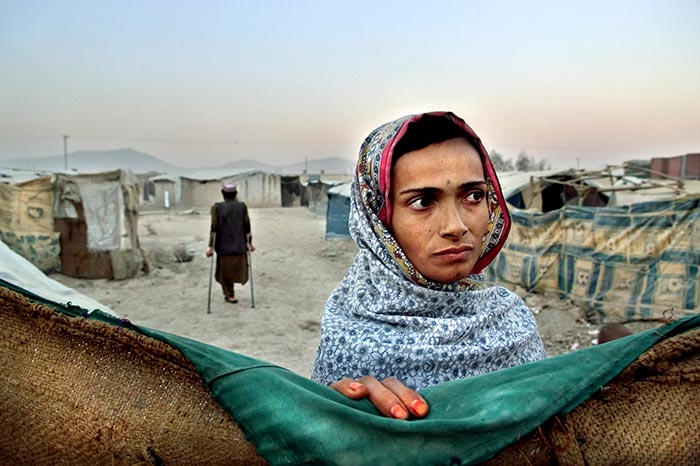
Tarasick is in her early sixties, a retired teacher and school superintendent, and a bundle of energy and passion. She and Margaret Stewart founded the Kingston, Ontario, chapter of their NGO after reading an article about the oppression of women under the Taliban. “It was an epiphany moment,” she told me on our second day in Kabul. We had just come from visiting District 8’s Fatema Tul Zahra school, one of the many projects the organization supports.
Stabilizing the country and improving its education system was one of the main reasons Canada engaged in Afghanistan, and it has made impressive gains in this area: in 2001, 700,000 students were enrolled in school, almost none of them girls. Today more than 10 million children go to school, and 40 percent in the primary grades are girls. Since 2002, more than 4,500 new school buildings have been constructed, and the number of teachers has increased eightfold, to nearly 200,000. In addition, more than a quarter of a million women have attended literacy classes.
“Canadians had a feeling for Afghanistan greater than we often give credit for,” says Ron Hoffmann, who served as Canada’s ambassador in Kabul from September 2008 to August 2009 (he is now senior coordinator for Asia policy and strategy at the Department of Foreign Affairs, Trade, and Development). His posting in Afghanistan still weighs heavily on him. At the time, our troops were deeply engaged in Kandahar and suffering heavy losses; the process of nation building was not going as well as expected.
Hoffmann also had to deal with the kidnapping of a certain journalist, and we have since become friends. He worked around the clock to convince Afghan officials to make my release a priority. His relationship with the then head of the National Directorate of Security, Amrullah Saleh, was critical. Saleh’s team tracked down my kidnappers, arrested some of their family members, and arranged the swap. On the night of my release, it was Hoffmann who came to get me from Saleh’s Kabul headquarters.
“During the Taliban chapter of Afghanistan’s history, Canadians were deeply affected by the images of the severe social environment,” Hoffmann says. “Girls not being able to go to school, music not able to be played, women not being able to work. These things were anathema to Canadians.”
The war in Afghanistan was the first time our forces were deployed in serious, large-scale combat since the Korean War. There was a palpable rise in patriotism at home. Support Our Troops bumper stickers appeared on cars; people wore red on Fridays in honour of the military; and November 11 took on a new significance. Fighting the Taliban meant bringing liberation to Afghans. That is what most Canadians understood the mission to be, in part because that was how the Liberal government of the day sold it to the public, as an act of foreign duty in the name of freedom, democracy, and fighting terrorism. Polls showed strong national support. Canadians accepted this as a just war. More than that, it stirred a passion among ordinary people to help Afghanistan recover.
Lauryn Oates, for instance, was only fourteen when she heard that girls were not allowed to go to school in Afghanistan. She started a petition in her West Vancouver neighbourhood, demanding that the Canadian government denounce the Taliban. Today she is CW4WAfghan’s projects director, and divides her time between Canada and Afghanistan.
“I would have given up a long time ago if I hadn’t seen things changing,” she tells me over glasses of freshly squeezed watermelon juice. We are sitting in the heart of Kabul at the Flower Street Café, a relative oasis of calm amid the city’s urban chaos. She is taking a break from showing Tarasick, Stewart, and several other Canadian women around. Beyond 2014, NGOs such as CW4WAfghan will continue to provide the basics, such as teacher training, textbooks, and funding, but they cannot protect the millions of young children now crowding into schools. That will be up to the Afghan army and the police. Oates hopes the successes she has witnessed and worked to create will not be reversed: “There are classrooms full of kids who are the first person in their family to learn to read or write. This is just a massive, massive sea change. We in Canada are failing to see its significance.”
The Fatema Tul Zahra school is set in a low-income community, and the surrounding neighbourhood is considered rough, outside of the green zone where most NGOs and foreigners are headquartered. As we approached, a heavy gate opened to reveal a slightly dilapidated building. Inside, the school’s founder, Bibi Hajji, told us they have recently found a better location. Until last year, Canadian Forces paid for lunches for the 280 students, but now local businesses cover the meals, and the children’s uniforms are funded through donations. There is also a small health clinic next door for students and their families.
Our translator Murwarid Ziayee can hardly keep up with the list of things Hajji says she needs. “The drinking water,” Ziayee translates, holding up a hand to slow down the older woman, “is not clean here. It’s full of germs, and it’s unhealthy, and that’s why the community is always sick. They always have diarrhea and malaria and these things. All the time.” The clinic provides treatment, at $1 a patient, but some cannot even afford that.
The classrooms are small and packed. We visit a sewing class, where little girls eagerly show off the dresses they have made, which will be sold for 150 to 250 afghanis each (about $3 to $5 Canadian), with the girls getting a share of the revenue. A few former students now run a small tailoring and dressmaking business, and earn a good living for their families.
Next door, Oates is talking to a room full of young girls in white head scarves. When she asks what they want to be when they grow up, hands shoot into the air: “Teacher!” “Doctor!” “Engineer!” “Doctor!”
I’m struck by a young girl with bright blue eyes, staring at me shyly from the floor where she is seated, leaning into a friend beside her. Shazia is nine, and the other girl, Gita, is eleven. They give identical answers to the most obvious question: what’s your favourite subject? “Dari” (the language spoken by more than half of Afghans). Their fathers are dead, and their mothers wash clothes for a living. Gita, an eldest child, is the first in her family to go to school. Shazia has three brothers and a younger sister. “I love coming to school,” Gita says. “I want to stay until twelfth grade.” I ask about university, and they both nod. Gita wants to be a doctor, Shazia an engineer.
Our translator, Ziayee, is CW4WAfghan’s country director, overseeing a staff of fourteen. Her family supported her desire to go to school, even in the 1990s, when the country languished in a civil war prompted by the withdrawal of Soviet forces. They moved to Pakistan after the Taliban came to power in 1996, but remarkably Ziayee returned alone as soon as the Taliban left Kabul in 2001, a full five years ahead of her parents.
“I love and still love my country,” she says. “And especially my city, Kabul. It’s rising day by day. I’m mad for it.” A petite brunette with intense, dark eyes, she juggles appointments with school principals, meetings with parents, and projects across Afghanistan. She is also, crucially, the mother of a six-year-old daughter. “There’s always a fear,” she says. “This is a kind of fragile situation. We may lose some [of the gains women have made], or all of them, depending on the situation. Depending on general political change.”
When I ask her about the role of the international community, her response is unequivocal: don’t abandon us. “Leaving a war at this stage means you will give al Qaeda the chance to grow again. When the world talks about humanitarian assistance, or the humanitarian part of the fight, this is not done yet. They should finish it.” She is also critical of the Afghan government’s failure to live up to its end of the bargain. “Where we should have been standing now, and where we are not, is the fault of our governments. There should have been accountability, transparency, honesty among governments to their nations—which I don’t see.”
In 2008, at the height of Canada’s involvement, Afghanistan was the largest recipient of our aid dollars: $345 million that year. In 2012, it was less than half that. Corruption within Hamid Karzai’s government has contributed to a kind of fatigue among Canadians when it comes to aid, and there is also a perception that Afghanistan may be a lost cause. “There is an immense number of myths about Afghanistan,” Oates says, “foremost probably being that nothing here has changed, that the whole idea of an intervention is pointless, that it won’t lead to anything.”
She adds that Canadians are unaware of our own stake in Afghanistan’s future. “We’re not doing this out of charity or pity. This is part of regional and global security, and part of security for everyone, and so it’s in our interest.”
It is understandable why most of us cannot see the beauty in a place like Afghanistan. There are so many bad images: the aftermath of a suicide bombing at a local market; Afghan soldiers turning their guns on their NATO trainers; bags of cash being delivered to the presidential palace. Few of us get to meet refugees and displaced people trying to make a new life, or little girls excited about going to school, or the new teacher taking on her first class.
What I saw on my return confirmed what I had long believed, that Afghanistan must not become a lost cause. It felt good to be back, almost like I belonged here.
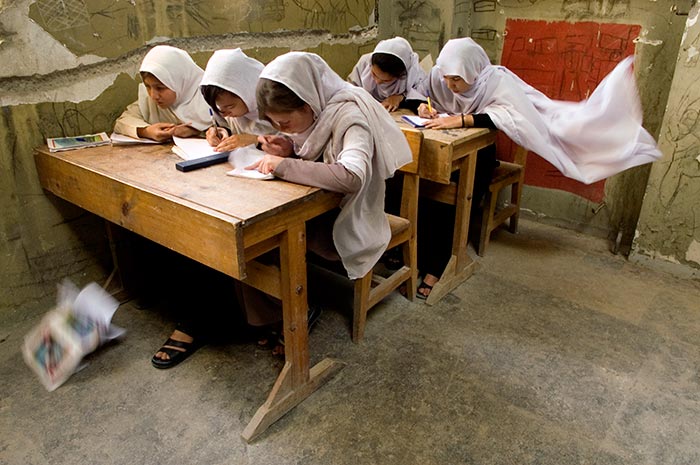
On July 4, 2007, Captain Matthew Dawe was killed, along with five other Canadian soldiers and their Afghan interpreter, when their armoured vehicle was blown up by an IED. It was one of the worst days for Canada in the war. I was in Afghanistan then, and had just travelled from Kandahar to Kabul to visit an orphanage when I got a call from one of my colleagues back at the base. “You’d better catch the first flight back,” he said.
The Canadian flag was at half-staff by the time I returned. The base was imbued with a sadness and sobriety I had never experienced before. The soldiers looked dazed. The staff at the Tim Hortons poured coffee with tears in their eyes. We waited more than twelve hours to report the tragic news; the military had to inform the families of the six dead soldiers before we could file our stories. I attended and reported on Dawe’s ramp ceremony and spoke to his friends. I wondered about his family and how they could possibly cope.
The more than decade-long engagement in Afghanistan, the longest in Canada’s history, has given our military a much-needed morale boost, rehabilitating its image after the Somalia scandal in the 1990s. The forces entered Afghanistan with a sense of both purpose and trepidation, a volunteer army from a small country, no longer peacekeepers but warriors, with new equipment, new recruits, and a renewed sense of pride. That pride is warranted, even if our development record remains spotty. For instance, the Canadian government took on the rehabilitation of the Dahla Dam as its signature project, and spent $50 million on it, but will not be around to see it finished. The Americans have taken over the job.
Still, Canadian troops managed to foster relationships with locals and maintain relative security in one of the most volatile provinces in the country. “Relative” is the crucial word here. How do you measure success against an insurgency? By the number of soldiers killed or wounded? By the number of dead Taliban members? Or by the number of children now going to school? That question is where my own cynicism subsides. Without the military providing security, many of the children I met on this trip to Kabul could not go to school.
Matthew Dawe’s mother, Reine, is a volunteer with the Kingston chapter of CW4WAfghan. Matt was the youngest of her four sons, three of whom served in Afghanistan. In March 2012, the eldest, Peter Jr., returned from his second tour as commander of Canada’s training forces in Kabul. It is hard to think of any family that has sacrificed as much.
Reine started working for the NGO after Matt was killed, in a desperate search to give his death meaning. We had exchanged emails and talked over the phone after I returned from Afghanistan in May and she told me about Matt. He had been in Kandahar for about five months before he was killed, and had learned enough Pashto to speak to villagers. He had an affinity for languages, she said, and when he called home he told her he felt he was making progress in connecting with the local people. Most of all, he believed in the mission.
I asked her if advocating for the girls and women of Afghanistan was her way of finishing her son’s work. “I think so,” she said, “and that’s why I want to carry on.” Like the 157 other mothers whose children will never return from Afghanistan, she hopes their sacrifice will have long-term significance. “You can’t close the door after you’ve gone in and started something. What else can we do to try to make a difference? ”
On our third day in Kabul, we were scheduled to visit a literacy class, but we got delayed when a suicide bomb went off not far from the school we had visited the day before. These kinds of attacks remain common, even if Kabul is much safer than it was when I was kidnapped. (I should note here that CBC, after learning that I was returning to Afghanistan on my own, with a grant from the Pulitzer Center on Crisis Reporting, eventually decided to support me. This meant that I had to travel with at least one armed guard, everywhere I went, even to the Canadian embassy in Kabul. My companions booked a small guest house, and I stayed at a compound for television networks, run by a private security firm. This seemed to make everyone feel better, especially my family, and certainly my bosses. At times, the security made me feel constrained. On the other hand, I never feared for my safety.)
When we are told it is safe to travel after the bombing, we drive about a half-hour from downtown Kabul, where CW4WAfghan is headquartered, and head west toward the Hazara section of the city. The Toyota SUV turns off a main road in the Dashti Barchi neighbourhood and down a narrow dirt road divided by an open sewer. The vehicle slows to a crawl, negotiating the bumps. We stop at a gate and are welcomed inside what I discover is a private home. In the first room, sitting cross legged on the floor and shrouded in head scarves, are about eighteen young women.
Those who attend this small class did not have the chance to go to school as girls; some have also been victims of abuse or violence. Over nine months, they receive literacy education five days a week, two hours a day. The Canadian NGO and a local one called Medica Afghanistan rent the space and provide the classes. Students learn the Dari alphabet, reading, and writing, and about basic rights and hygiene. Some will go on to school after finishing the course; others may find better jobs.
That is why Shana Gan is here. She is in her late twenties, raising four children alone. She will only say that her husband is “away.” Like so many Afghans, her family fled to Pakistan when she was young, and she was not allowed to go to school there. “They were new to the city,” she explains. “There was fear that if girls went to school in Pakistan, they would be taken away by bad people.” I ask what made her decide to learn to read and write.
“If we have education,” she says, “we stand on our own feet, and we can find work and make money to help our families.” She was married at sixteen, and had her first child two years later. She already dreams that her young daughter will become a doctor. One of the reasons she wants a better job is so she can send the girl to school.
Tarasick and Stewart will take these hopeful stories back with them to Canada, in a fresh push to their donors. “We’re small, very small,” Tarasick says, “but if we have one schoolgirl whose life is changed and who can contribute to her own country, then it’s worth our time and effort.” To me, however, the NGO’s accomplishments are anything but small. It has trained more than 4,000 teachers in the past five years, and many programs have come to rely on its funds.
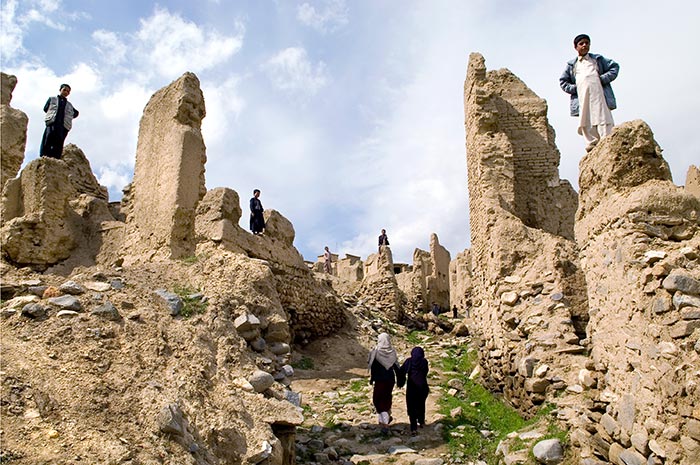
On my last day in Kabul, I visit Fawzia Koofi, the outspoken and controversial parliamentarian who has already announced her intention to run for president next year. It is Friday, typically a day of prayer and rest, but Koofi is constantly on the phone. In parliament the next day, she is introducing a bill to eliminate violence against women, which will enshrine their rights in the Afghan constitution, including prohibiting child marriage and the practice of baad, the trading of women to settle family disputes.
After she makes a few calls to solicit support for her motion, we sit in her living room, drinking tea and talking about the dilemma she faces as a female member of parliament when the government is opening up peace talks with the Taliban, at whose hands she has suffered greatly. Her husband, Hamid, was imprisoned by the Taliban. He contracted tuberculosis in jail and died shortly after his release in 2003, leaving her to raise their two daughters alone. “I look at it from two perspectives,” she says, adjusting her head scarf. “As a woman, I don’t believe actually that they will put violence away, but as a politician everything is possible in politics. So maybe they will put violence away.”
Like almost every Afghan woman I have spoken with, her greatest fear is that the Taliban will make a resurgence, neutralizing the progress women have made. She would like the international community to stay a bit longer, until Afghans are confident in their own abilities to keep the country safe. “We need to learn how to keep this country going forward. If we fail in 2014, it is a failure we cannot afford, because that is a failure for democracy.”
The next day, Koofi’s bill was blocked in parliament. Mullahs and the more conservative MPs argued that it contravened sharia law, and demanded changes that would, among other things, prevent men from being prosecuted for rape within marriage. Some women’s rights advocates assailed Koofi for introducing the bill, saying it was too soon for parliament to have this kind of debate.
It is a stark reminder that progress is fragile, and of what is at risk after 2014. Yes, Afghans must learn how to stand on their own, take care of their country, and protect their rights. They understand that, and they want it more than anything; but to protect the gains that have been made, sustained investment from the rest of the world is still needed, and will be for a long time. There is fear here, but also optimism: many believe that even if the Taliban grows more powerful, it will never rule the way it did in the 1990s. Too many women have already been educated, too many have found their voices, and too many have won their rights to allow anyone to take them away.
Before I left Kabul, I went to the top of Bibi Mahru Hill and looked down at the city. All around, I could see development—more houses being built into the hills to the south. To the west, I could almost make out the Charahi Qambar camp in the far distance, and my thoughts wandered back to those awful days in the hole. Two kites flew overhead, their tails flapping against the blue sky. Behind me, I could hear the voices of young children playing in the park. An ice cream truck passed, oddly blaring a Christmas tune from its loudspeaker.
If I had felt an ounce of doubt or apprehension about returning, it was erased in that moment, by the sights and sounds of a city whose resilience I have come to love, despite the memories it holds for me. I always knew I would find a way to return, and I would like to think this is only the first of many trips back, and that I will see continued and sustained progress on future visits.
Staring out at the Hindu Kush—the mountains my kidnappers marched me over after they took me from the camp on that fateful Sunday morning—I thought about what drew me back to a place that has been the root of so many of my nightmares over the past five years. I realized that I was not much different from Madeliene and Margaret and Lauryn. I needed to come because I care and hope for Afghanistan’s future. Because I want little girls like Gita and Shazia and young women like Shana to make it. Because I want to see politicians like Fawzia Koofi get her women’s rights bill passed. Because they have the same dreams and hopes I did as a girl growing up in Canada, and they have every right to pursue them. Because their stories are not yet finished, and I want them all to have a happy ending.

